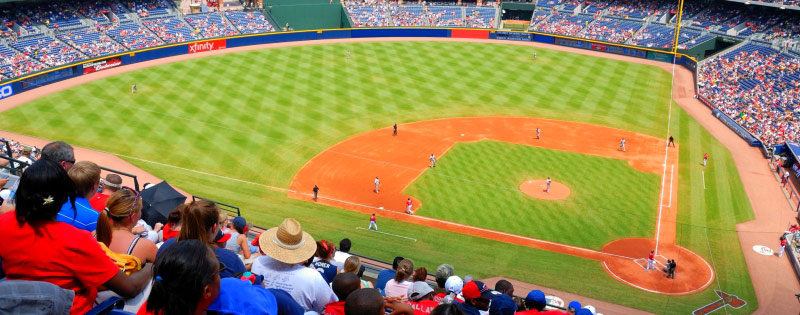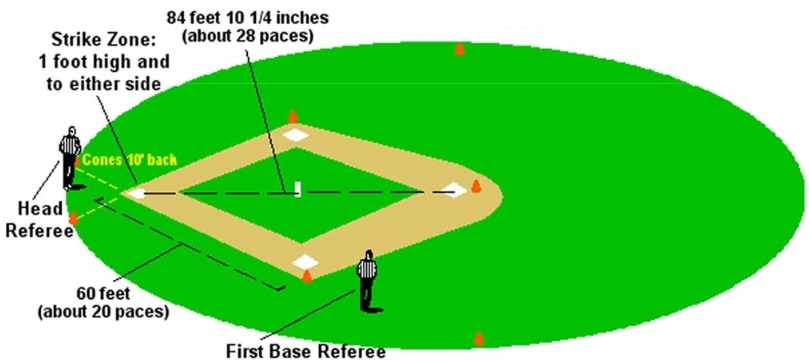The Kickball Field: Positions, Dimensions And Diagrams

In this section we will cover every detail related to the kickball field, starting with an overview of the kickball field positions and layout, and finishing up with guidelines about official kickball field dimensions.
1. Overview of All The Kickball Field Positions
The kickball field diagram is as follows:

From the top left corner, to bottom, the kickball field positions are as follow:
Left Center – this position covers deep kicks and throws the ball to second base.
Right Center – this player covers deep kicks as well and throws the ball to second base.
Short Field – covers second base and as the pitcher tells him otherwise. Must be ready to back up in case of a power kick.
Left Field – runs in to help Third Base and also has the role to cover the base itself. Must be ready to throw the ball to third base (short kicks to the left and fouls)
Right Field – runs in to help First Base and gets overthrows to first. Must be prepared for fouls and short kicks to the right.
Short Stop – must stop the ball and get it to the base at play. Also must run and cover the second base is the Short Field has to leave that base for some reason.
Second Base – positions opposite of the short stop in order to protect from bunts. Backs up the first base and has to be ready to run and cover the second base in case Short Field has to leave that base for some reason. In case a long kick is expected, then you should be covering the second base, while telling Short Field to move further back.
Pitcher – must check the field to ensure everyone is ready for the play. Stays on the mound to end the play a.s.a.p.. Covers home base if the Catcher has to run out for a short bunt.
Third Base – must rush to catch the long or short bunts. Has to have a strong hand to be able to throw the ball to second base. Short Stop or the Left Field will cover his base if he has to run off to catch the bunts.
First Base – must stay planted on his base. Right Field and Second Base will get the overthrows to the First Base.
Catcher – must charge the short bunts. Positions behind the kicker.
Before we go on to discuss the kickball field dimensions, we must note that if you want to be fully prepared for your next game, you should definitely check out the following resources:
– All that you need to play kickball
– How can you improve at playing kickball
Kickball Field Dimensions
Onwards to the kickball field dimensions. In terms of size, WAKA states that kickball is played on a square field with 60-ft-long equal sides. The pitching mound is 42 feet 5 1/8 inches from home plate in the center of the diamond. Corner to corner measurement through the pitching mound is 84 feet 10 ¼ inches. The strike zone measures 1 foot too either side of home plate and 1 foot high.

The head referee stands by home plate. The first base referee stands on the foul line past the the first base. The head referee is the one to make all the final rulings. When using cones, do not place them next to home plate as a strike zone. They should only be placed at least 10 ft away from home plate and aligned to the baselines to assist in foul calls.